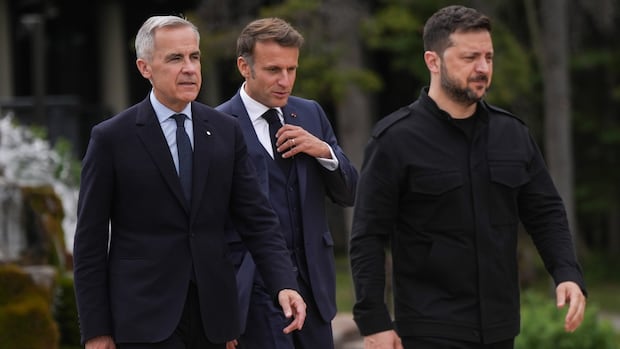Canada and Europe will be drawn a little closer together on Monday as Prime Minister Mark Carney signs a strategic defence and security partnership with the European Union.
The agreement will open the door for Canadian companies to participate in the $1.25-trillion ReArm Europe program, which is seen as a step toward making Canada less reliant on — and less vulnerable to — the whims of the United States.
Eventually, it will also help the Canadian government partner with other allied nations to buy military equipment under what’s known as the SAFE program.
Further talks and agreements will be needed before both of those aspects become reality.
Carney has been signalling for months that his government is unhappy with spending as much as 70 per cent of its military equipment appropriation on U.S.-made gear.
Other non-EU nations, including the United Kingdom, have already struck their own strategic agreements. Australia signalled last week it has started negotiations on a deal with Europe.
Chief political correspondent Rosemary Barton speaks with former NATO secretary general George Robertson about how the ReArm Europe plan could help Canada reduce its military dependence on the U.S.
Much of the focus has been on the joint equipment procurement aspects of the impending deal. However, the U.K.’s agreement, made public on May 19, establishes a series of institutional links for crisis management, maritime security and cybersecurity.
It is nowhere near as comprehensive as the NATO alliance. But given the growing uncertainty over the reliability of the Trump administration, the partnership is important.
“It could complement NATO. It’s not necessarily a substitute,” said Stephen Saideman, who holds the Paterson Chair in International Affairs at Carleton University in Ottawa.
“It makes sense to work with the Europeans as much as we can on defence,” he said. “Maybe if we do this kind of thing, NATO can live even if the United States pulls out.”
NATO spending to be debated
Carney will be attending the North Atlantic Treaty Organization summit in The Hague, in the Netherlands, almost immediately after signing the defence and security deal with the EU
The 32-member Western military alliance is set to debate raising the defence spending benchmark to a combined five per cent of a country’s gross domestic product (3.5 per cent for direct military spending and an additional 1.5 per cent for defence infrastructure).
Christian Leuprecht, a professor at the Royal Military College of Canada in Kingston, Ont., said the way the defence partnership and the ReArm Europe program are set up, they could not be considered a replacement for NATO because there’s no operational military aspect to the individual arrangements.
However, a significant aspect of the U.K. deal involves strengthening co-operation through “exchanges on situational awareness and threat assessments in areas of common interest, including classified information.”
The agreement goes on to say that “the U.K. and the EU will explore additional measures to ensure that classified information can be exchanged swiftly, safely and effectively” in accordance with Britain’s security of information laws. That’s significant because the U.K. — like Canada — is part of the Five Eyes intelligence-sharing network that includes the United States.
It remains unclear, at the moment, whether Canada’s deal will contain similar provisions.
Leuprecht describes ReArm Europe as a “cartel” with a mission to drive down prices of military equipment through collective procurement.
A big component of the EU scheme is the SAFE loan program that allows member countries to borrow funds for military equipment at more favourable rates than direct national borrowing. It’s intended for smaller countries with less fiscal capacity and lower credit ratings, Leuprecht said.
Canada wouldn’t necessarily have access to that $235-billion fund, he added. The exception might be if a non-EU country that needs the funds — for example, Ukraine (which is part of the overall program) — is required to tap into it.
There are rules to the loan program that encourage members to buy European and partner equipment.

